Successful Light Polarization Techniques
Video and machine vision systems rely on electronic imagers that typically exhibit anywhere from eight-bit to twelve-bit signal-to-noise ratio. Although sufficient for many applications, cameras in this category may be problematic in cases where the field of view includes extremely bright regions or hot spots. Some objects have certain features that are extremely reflective, or objects may be illuminated from an angle that produces intense reflection. Light polarization filters offer solutions to these and other common imaging problems.
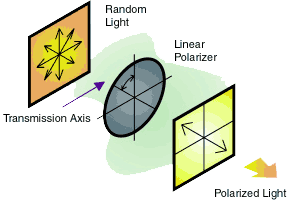
Understanding Polarization Axis
By considering light as an electromagnetic wave, we realize that in three-dimensional space a wave can oscillate up and down, side to side, or anywhere in between. Incandescent, fluorescent, LED, and many laser light sources are randomly polarized. In other words, the oscillating angle or plane of light from each point on the light source is varying with time. Taken as a time average, therefore, randomly polarized light sources continuously output all angles of polarization.
Polarizers absorb incident light oscillating in all but one plane - its polarization axis - yielding linear polarization. Another example of polarization is the partial polarization of light reflecting from a plane surface, an effect less dramatic than a polarizer element. Linear polarization of a randomly polarized light source reduces the intensity of the source theoretically by 50%, and in practice closer to 60-65%. Light that passes through two polarizers with orthogonal polarizing axes will be compley attenuated. However, the almost total elimination of hot spots and glare is exactly what makes a polarizer effective in evening out illumination levels within a field.
Application Examples
Shown are examples of some common polarization of light techniques used in imaging applications. By utilizing a linear polarizer over the light source, the lens, or both, it is possible to eliminate glare from a reflective surface, bring out surface defects or show stress in a transparent object. More detailed information on which type of polarizer is right for your application can be found in our Polarizer Selection Guide.
Eliminating Hot Spots: Hot spots are highly reflective areas within a more diffuse reflecting field. Polarizing the light that strikes these reflective areas, and using a crossed polarizer over the lens, effectively eliminates the hot spots, while evenly illuminating the rest of the field.
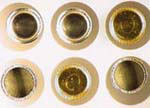
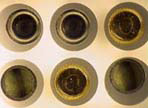
Without Polarizer Polarizers over Light Source and Lens
Glare From a Plane Surface: Glare from highly reflective surfaces or optical windows is removed by putting a polarizer over the lens. Due to partial polarization of light, the light source may or may not require a polarizing filter in this scenario.

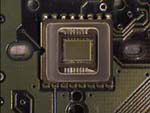
Without Polarizer Polarizer over Light Source or Lens
Contrast Enhancement: Ring light guides are popular for their even, diffuse illumination. However, glare or reflection of the ring itself may occur. Polarizing the ring output and the lens separay can reduce these effects, and bring out surface details.
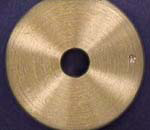
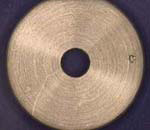
Without Polarizer Polarizers over Ring Light and Lens
Stress Evaluation: Stress, or unwanted refractive index variations, causes a rotation in the angle of polarization. Viewing an unstressed clear object between crossed polarizers should yield a compley dark field. However, when stress is present, the localized changes in refractive index actually rotate the angle of polarization to give varying degrees of transmission - even different amounts of transmission for different colors.
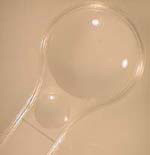
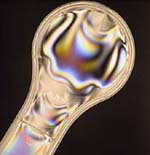
Without Polarizer Polarizers Before and After Transparent Object
免责声明
- 凡本网注明“来源:化工仪器网”的所有作品,均为浙江兴旺宝明通网络有限公司-化工仪器网合法拥有版权或有权使用的作品,未经本网授权不得转载、摘编或利用其它方式使用上述作品。已经本网授权使用作品的,应在授权范围内使用,并注明“来源:化工仪器网”。违反上述声明者,本网将追究其相关法律责任。
- 本网转载并注明自其他来源(非化工仪器网)的作品,目的在于传递更多信息,并不代表本网赞同其观点和对其真实性负责,不承担此类作品侵权行为的直接责任及连带责任。其他媒体、网站或个人从本网转载时,必须保留本网注明的作品第一来源,并自负版权等法律责任。
- 如涉及作品内容、版权等问题,请在作品发表之日起一周内与本网联系,否则视为放弃相关权利。
 手机版
手机版 化工仪器网手机版
化工仪器网手机版
 化工仪器网小程序
化工仪器网小程序
 官方微信
官方微信 公众号:chem17
公众号:chem17
 扫码关注视频号
扫码关注视频号




















 采购中心
采购中心